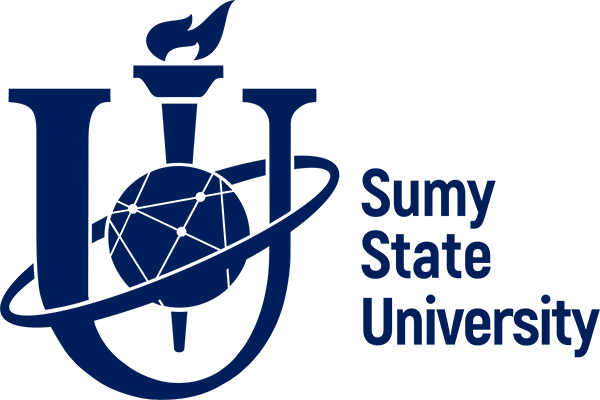AUTHENTIC MATERIALS IN FRENCH LANGUAGE LEARNING AS A PRACTICE OF INTERCULTURAL COMMUNICATION
Keywords:
French language, authentic materials, foreign language communicative competence, intercultural communicationAbstract
The theoretical aspects of the use of authentic materials in the study of foreign languages are mainly focused on the problem of forming the language and speech competence of the methodological provision of separate components of intercultural students' education. However, the context of intercultural communication actualises the question of the functional filling of authentic educational materials for the implementation of linguocultural and socio-cultural aspects in the study of a foreign language. The purpose of the article is to study the effectiveness of authentic educational materials in the formation of foreign communicative competence, which has a complex structure and acts as interaction and interpenetration of linguistic, sociocultural and communicative competences, the level of formation of which allows a student or a future specialist to effectively implement a foreign language, and, therefore, interlingual, intercultural and interpersonal communication. The study uses a wide range of theoretical methods, including discursive analysis, intercultural studies, pragmatic and sociolinguistics approaches, systematisation of scientific research that studies this issue, as well as a survey method, including observation, conversion analysis and a statistical method during the calculation of results. The effectiveness of authentic materials such as authentic textbooks, written and oral texts from the media, video and audio materials, and the advantages of the IT network in the teaching of the French language have been analysed. It has been found that authentic materials in the teaching of French language promote the implementation of intercultural communication.References
Bacon S. & Finneman M. (1990). A Study of Attitudes, Motives, and Strategies of University Foreign Language Students to Authentic Oral and Written Input. Modern Language Journal, 74(4). pp. 459–473. Аvailable at: https://doi.org/10.1111/j.1540-4781.1990.tb05338.x
Berardo S. (2006). The Use of Authentic Materials in the Teaching of Reading. The Reading Matrix, 6 (2). pp. 60–69.
Byram M. (1997). Teaching Assessing Intercultural Communicative Competence. Clevedon: Multilingual Matters.
Bigych O. & Rusnak D. (2019). Authentic media-resources as a tool for development of prospective French language teachers’ intercultural communicative competency. Information Technologies and Learning Tools, 70(2). pp. 165–179. Аvailable at: http://nbuv.gov.ua/UJRN/ITZN_2019_70_2_14
Bihun O. (2017). French as a Second/Third Foreign Language in the Context of Multilingual Competence of Philology Students. Science and Education, 4. pp. 81–86. Аvailable at: https://doi.org/10.24195/2414-4665-2017-4-14
Karamysheva T. V. & Ivanchenko A. I. (2001). Reklama yak component mizhkulturnoi komunikatsii. [Advertising as a Component of Intercultural Communication]. French Lessons (pp. 97–132). Saint-Petersburg, 2001 [in Russian]
Mishenina T. M. (2017). Axiological Parameters of Philology Students’ Linguistic Personality in the Course of Linguocultural Studies. Science and Education, 4. pp.118–123. Аvailable at: https://doi.org/10/24195/2414-4665-2017-4-20
Moles, 1973 – Moles A. (1973). La Communication. Paris: Mouton. Аvailable at: https://monoskop.org/Abraham_Moles
Papizhuk V. (2014). Vykorystannia avtentychnykh materialiv pid chas navchannia frantsuzkoi movy yak tretioi inozemnoi u VNZ. [The Authentic Materials’ in French Language Teaching as a Third Foreign Language in a High School]. The Problems of Modern Teacher Training, 10, pp. 43–47. [in Ukrainian]
Pocheptsov G. (2001). Teoriia kommunikatsyi. [Communication Theory]. Moscow: Refl-book. Аvailable at: http://niv.ru/doc/communications/pocheptsov/index.htm
Roberts, 2008 – Roberts J. & Roberts K. (2008). Deep Reading, Cost/benefit, and the Construction of Meaning: Enhancing Reading Comprehension and Deep Learning in Sociology Courses. Teaching Sociology, 36. pp. 124-140.
Rusnak D. A. (2017). Frankomovna mediareklama yak zasib formuvannia mizhkulturnoi kompetentnisti u studentiv movnykh spetsialnostei. [The Advertising French Media Text as a Method of Forming the Foreign Language Students’ Intercultural Competence]. Foreign Languages, 1. pp. 23–31. Аvailable at: http://nbuv.gov.ua/UJRN/im_2017_1_5. [in Ukrainian]
Samovar L. A. & Porter R. E. (Eds.). (2001). Communication Between Cultures (4th ed.). Belmont, CA: Wadsworth.
Smith L. R. (1999). Intercultural Network Theory. International Journal of Intercultural Relations, 23, pp. 629–658. Аvailable at: https://doi:10.1016/S0147-1767(99)00013-9
Ter-Minasova S. H. (2000). Yazyk i mezhkultlrnaia kommunikatsyia. [Language and Intercultural Communication]. Moscow: SLOVO. Аvailable at: https://www.gumer.info/bibliotek_Buks/Linguist/Ter/_Index.php [in Russian]
Trudgill P. (1992). Introducing Language and Society. London: Penguin. Аvailable at: https://kupdf.net/download/peter-trudgill-sociolinguistics-an-introduction-to-language-and-society_5af61f5fe2b6f5af7a3c6b95_pdf
Woodbine J. (2018). Interculturality, Interaction and language Learning. New York-London. Аvailable at: https://www.routledge.com/Interculturality-Interaction-and-Language-Learning-Insights-from-Tandem/Woodin/p/book/9780367589868
Zarate G. (1986). Enseigner une culture étrangère. Paris: Hachette. Аvailable at: https://gallica.bnf.fr/ark:/12148/bpt6k4807654h.texteImage














